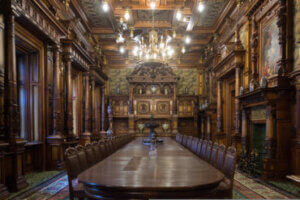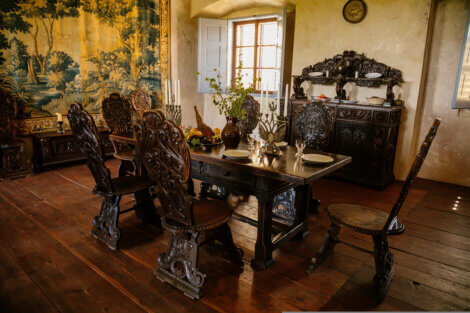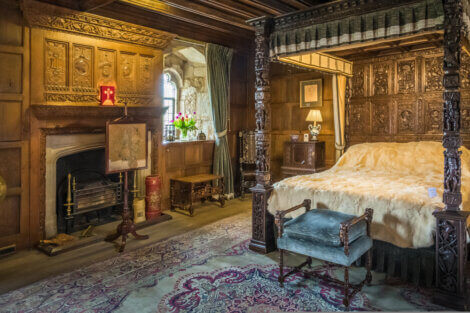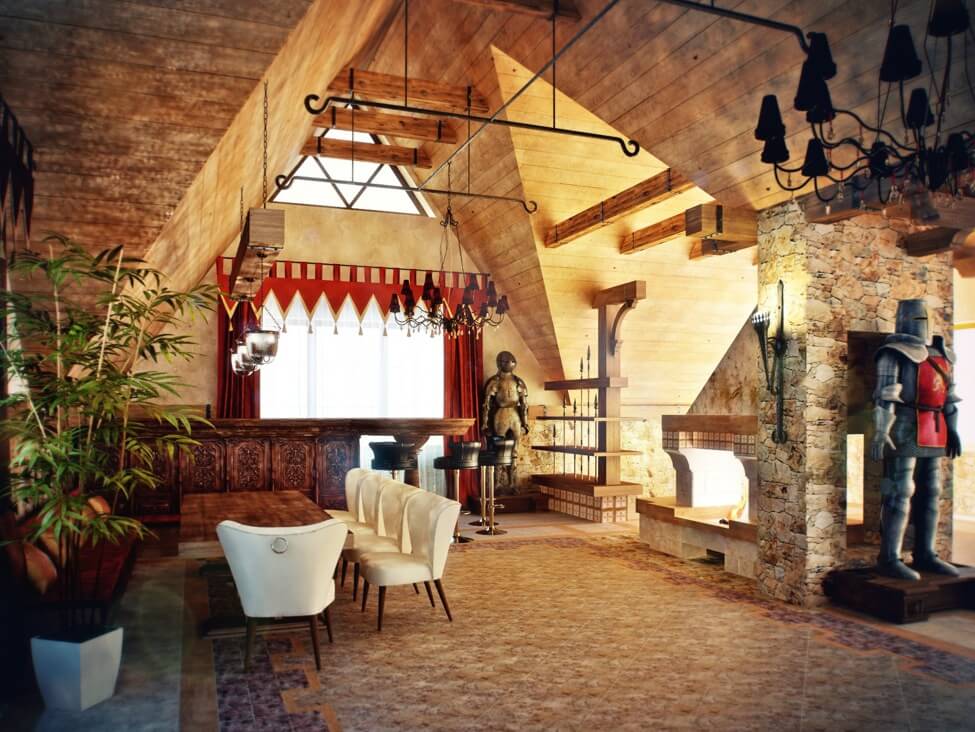What Were Medieval Palace Interiors Like?

Throughout history, the wealthier classes have displayed their social status through their homes. But what was the decoration like in medieval palace interiors?
Luxury and ostentation were the order of the day. It was a way of reflecting the power and greatness of a lineage or, simply, the personal taste of the owner. Also, the decoration was an important way to impress the guests.
Since Roman times, the tendency to display wealth in this way was the order of the day in the villas of rich people. Gradually, interior design evolved until the Middle Ages, when feudalism and innate social hierarchies took over as a model for social organization.
The Middle Ages, a period of social change

Certainly, it was from the 11th century onwards, in the Middle Ages, that palace and castle constructions became more ubiquitous. This is because the social elite wanted to differentiate itself from the less wealthy classes that lived in the country and the cities.
Those belonging to the economic, social, and political powers developed an interior design style where they could display wealth and abundance. If you compare them to us, in those days very few people had access to the choice of furniture, paintings, lamps, etc that’s available today. However, medieval palace interiors still displayed certain distinctive features that embellished the homes. Therefore, a unique home decor emerged, featuring mostly brown and earth tones, which were useful to convey noble, authenticity, and purity.
Different types of housing are a reflection of differences in social status.
Medieval palace interiors – the most common decorative elements
You can look back on a series of items that, generally speaking, used to be found in medieval palaces. Indeed, not only the items themselves but the material and the technique used on them were important. That’s why professions such as carpenters or goldsmiths were so important.
- The dining table was usually long and large. It was a means of bringing together a large number of guests and hosting lavish dinners. Pine and cherry wood tables were commonplace.
- Candelabras and candles were also popular. These were used not only for special meals but also to light up the spaces; there were even wrought-iron lamps on the walls of the corridors in the form of candles.
- The rest area with armchairs next to the fireplace was very common. In fact, the films set at this time show scenes with this type of design. A place for reading and disconnection was also very important.
- As for the floors, they were usually made of wood or stone; therefore, they were cold and had to be covered with large carpets. Carpets with Persian prints or carpets of Muslim tradition were common, even in Christian homes.
- However, the bathrooms and kitchens were conventional and not very well thought through. They were considered to be places of transit, practicality, and labor, and were therefore equipped with only the essential elements.
What were the bedrooms like?

One interesting thing about medieval decoration is the concept of privacy that lay in the bedroom. As in the Roman era, they may not have been as customized as we tend to make them today, but they had some very interesting features.
For example, canopy beds. These beds had fabrics wrapped around them. They were used as decoration and, also, they encouraged intimacy. Bed structures made of wood were very popular because of their fine and delicate finishes.
Also, bedrooms used to feature cupboards, desks, and a small sink with a mirror, bowl, and water jugs.
Opulence as a means of expression
Noble families used to live their everyday lives with great opulence. Palaces are living proof of this – interior decoration became the main means of expressing the taste and artistic inclinations of the tenants.
Undoubtedly, this model of acquiring social distinction through interior decoration would last for centuries. Indeed, this doesn’t only apply to the Middle Ages. The aesthetic quality of the palaces has been a model for the wealth display of the most powerful families in history.

Bibliography
Cherry, John: Medieval Decorative Art, Trustees of the British Museum, 1991.
All cited sources were thoroughly reviewed by our team to ensure their quality, reliability, currency, and validity. The bibliography of this article was considered reliable and of academic or scientific accuracy.
- Cherry, John: Las artes decorativas medievales, Madrid, Akal, 1999.








